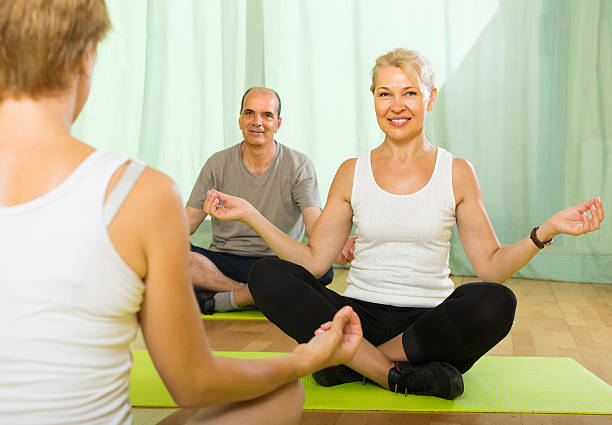Introduction

Living with Parkinson's disease (PD) can present many challenges, including difficulty maintaining an active lifestyle. Exercise is essential for managing the symptoms of PD and improving quality of life.
However, it can be difficult to stay motivated when faced with physical and mental obstacles. In this post, we share some helpful tips to help you stay motivated and keep up with your exercise routine.
What is Parkinson's disease?
A lack of dopamine in the brain causes Parkinson's, a neurological disorder that impacts movement control. Symptoms usually involve tremors, slow movement, stiffness, and balance issues but can vary from person to person.10 Tips for Exercising With Parkinson's
Exercise can be an effective way to help manage the symptoms of Parkinson's disease. However, staying motivated to exercise can often be difficult for those with the disease.
Here are ten tips for staying motivated when exercising with Parkinson's:
1. Make Exercise Part of Your Daily Routine:
Incorporating exercise into your daily routine is a highly effective way to stay motivated while exercising with Parkinson's. Try to establish a regular schedule for exercise that works for you; this could mean exercising at the same time each day or doing different exercises on different days. Making exercise an expected part of your daily routine will help to break down the barrier between you and regular physical activity.
2. Establish realistic goals:
Exercise in your daily routine is a highly effective method for maintaining motivation when exercising with Parkinson's. Start small by setting short-term goals you can easily accomplish, like walking around the block once or twice a week. Celebrate these small victories and use them to build toward bigger goals, like completing a 5K run or participating in an organized event.
3. Break it up:
Living with Parkinson's Disease can make it challenging to stay motivated to exercise. One way to make exercise easier is by breaking it up into smaller chunks of time. Try taking short walks throughout the day instead of attempting one longer. You can also set aside a few minutes in the morning or evening for light stretching or simple strengthening exercises.
4. Get creative:
Exercise doesn't have to be boring. Find an activity you enjoy and make it part of your exercise routine. You may like dancing, swimming, or stretching; whatever it is, find a way to make it fun. You can make exercising with Parkinson's disease more enjoyable for everyone involved by inviting friends or family members to join you in these activities.
5. Find a partner or group:
For some people, the best way to stay motivated is to exercise with a partner or group. Having someone else there can help keep you accountable and provide moral support when needed. Many local Parkinson's organizations offer exercise classes and groups specifically for those with the disease – a great place to find exercise partners or a support group.
6. Track your progress:
Tracking your progress over time is a great way to stay motivated to exercise regularly. Use a journal, calendar, or even an app to monitor how often you exercise and how far you've come since starting. The fruits of your labor can serve as a powerful motivator.
7. Treat yourself:
After completing a challenging workout, it's important to acknowledge your effort and treat yourself. Consider getting a massage or a spa day as a reward. Alternatively, even something small, like enjoying your favorite snack, can motivate you.
8. Find ways to stay motivated:
Lastly, finding ways to stay motivated is important even when exercise doesn't seem enjoyable. You may listen to music or watch a favorite movie while exercising; find something to help pass the time and make exercise more enjoyable.
9. Take rest days when needed:
Taking rest days is crucial for maintaining exercise motivation. Giving your body one or two days off each week allows it time to recover and repair, which will help you stay energized and focused for your next workout.
10. Celebrate small victories:
Remember to celebrate the small milestones that come with exercising regularly. Congratulate yourself for every step forward – no matter how small – and take pride in your accomplishments. This will help to keep you motivated and remind you of just how far you've come.
How to encourage people with Parkinson's to exercise

Exercising regularly with Parkinson's disease can be challenging, but it is important to maintaining good physical health and quality of life. Here are some tips to help motivate people with Parkinson's to stay active:
-
Make exercise a habit. Establish regular exercise times and stick to the schedule as much as possible.
-
Set achievable goals. Aim for progress rather than perfection, gradually build your stamina and strength.
-
Find an activity you enjoy. Exercise can be more enjoyable if you choose an activity that you find interesting and meaningful.
-
Vary your routine. Alternate between different activities, such as walking and swimming, to prevent boredom and keep things fresh.
-
Connect with others. Exercising with a group or friend can motivate and encourage you to stay active regularly.
-
Reward yourself. Celebrate your successes with small rewards, such as indulging in a favorite treat or buying something nice.
-
Find support. Speak to your healthcare provider and join online communities to get advice and encouragement from others who understand what you're going through.
What types of exercise work best for people with Parkinson's?

Exercise is an essential part of managing Parkinson's symptoms. Many types of exercises can be beneficial for people with Parkinson's, including:
Aerobic exercise:
Aerobic activities like walking, running, and biking are great ways to improve balance and coordination while increasing overall strength and endurance. Swimming or aquatic exercise can also be beneficial for people with Parkinson's.
Strength training:
Regular strength training can help improve muscle tone and keep bones healthy. Exercises like lifting weights, using resistance bands, or doing bodyweight exercises are all helpful in building strength and endurance.
Balance and flexibility exercises:
Working on balance and flexibility is important to help prevent falls. Activities such as tai chi, yoga, or Pilates can be beneficial in improving balance and flexibility while reducing stress.
Range of motion exercises:
Range of motion exercises is important for maintaining joint and muscle flexibility. These exercises involve stretching and rotating the arms, legs, and other body parts to promote mobility.
By incorporating various exercises into a regular exercise plan, people with Parkinson's can stay active and maintain their independence and quality of life. Before beginning any exercise program, seeking advice from a doctor or a physical therapist is necessary. With the right guidance, you can find safe and enjoyable activities for managing your Parkinson's symptoms.
What are the major barriers to exercise for people with Parkinson's disease?
People with Parkinson's disease face various exercise challenges, including physical, mental, and emotional barriers.
Firstly, physical symptoms such as muscle stiffness (rigidity), tremors, and balance problems can make it difficult for people with PD to exercise safely and effectively. Even simple activities like walking or stretching may be difficult due to a lack of coordination and range of motion.
On the mental level, people with Parkinson's disease may become overwhelmed by the changes in their physical abilities, leading them to feel discouraged or unmotivated to exercise. Feelings of depression and anxiety are also common among PD patients, further diminishing an individual's ability to participate in physical activity.
Finally, financial and logistical challenges can also be a significant barrier to exercise for people with PD. Many Parkinson's patients may not have access to specialized medical care or the necessary equipment needed to pursue an exercise routine. Additionally, the cost of such treatment and resources can be prohibitively expensive.
Although people with Parkinson's disease may experience a variety of barriers to physical activity, many strategies can be used to overcome these challenges and improve the overall quality of life. Developing an appropriate exercise plan with a doctor or physical therapy, exploring adaptive equipment and devices, and seeking out low-cost or free resources are just a few strategies to help people with PD stay active and engaged.
FAQ's
How do you motivate someone with Parkinson's disease?
Motivating someone with Parkinson's disease can be challenging. Setting realistic goals and tailoring the exercise regimen to the individual's abilities and limitations is important. Encouragement and positive reinforcement can keep them motivated and ensure enjoyable activities.
What are coping strategies for Parkinson's disease?
Coping strategies for Parkinson's disease will vary from person to person. Finding enjoyable activities to help manage symptoms, such as exercise class, relaxation techniques, or meditation, is important.Keeping a positive outlook and staying connected with family and friends can provide emotional support and give the individual a purpose.
What are four ways to increase dopamine?
1. Eating a healthy, balanced diet: Foods rich in dopamine-boosting nutrients, such as tyrosine (in lean proteins like fish and poultry) and Vitamin B6 (in foods like bananas and brown rice), can help increase dopamine levels naturally.
2. Getting regular exercise: Exercise can improve brain health and stimulate dopamine production.
3. Supplementing with herbs and vitamins: Some herbs and vitamins, such as ginkgo biloba, vitamin C, and DHA, are thought to have dopamine-boosting potential.
4. Meditation or mindfulness: Mindful meditation has been shown to increase dopamine levels in the brain and reduce stress.
How to exercise with Parkinson's?
Exercising with Parkinson's is an important part of managing the condition. Regular physical activity can help improve muscle strength, coordination, balance, and overall quality of life. Exercise may even slow down the progression of some symptoms.
How do you keep Parkinson's patients busy?
Parkinson's disease can be a challenging condition to live with, but staying active is important for managing the symptoms. Occupational therapy (OT) can help people with Parkinson's stay physically and mentally engaged. OT activities focus on developing life skills that promote independence and functioning and maximize safety when doing everyday tasks.
What calms Parkinson's?
Relaxation techniques can be helpful for people with Parkinson's who have difficulty managing their stress or experience tremors or stiffness. Relaxation activities such as yoga, progressive muscle relaxation, guided meditation, tai chi, or deep breathing exercises can help to reduce physical tension and calm the mind.
Conclusion
In conclusion, staying motivated to exercise with Parkinson's disease can be challenging. However, you can stay motivated to participate in regular physical activity by understanding the importance of exercise, building a supportive community, setting achievable goals, and learning more about your condition. Making and sticking to a plan is key to remaining active and finding joy. Finally, remember to be patient with yourself and that any progress, no matter how small, is a success to celebrate.

